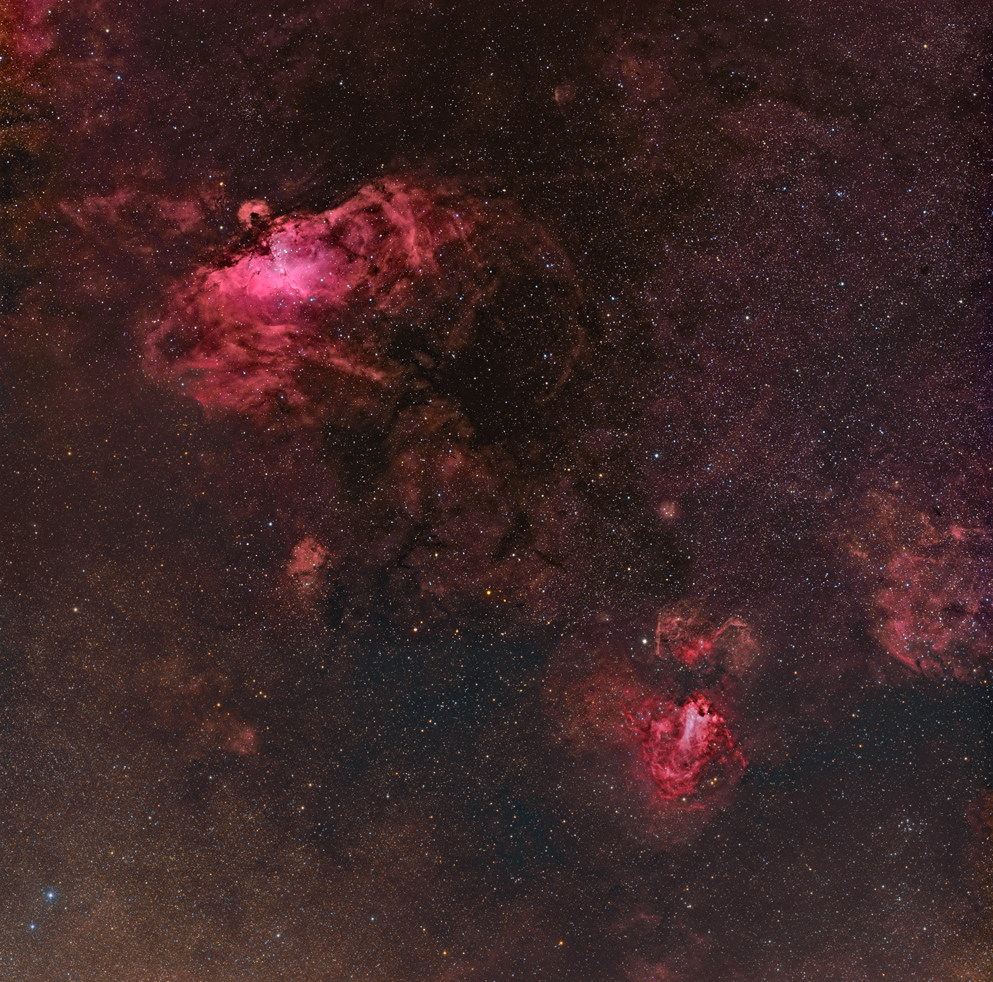
Eagle Nebula and Swan Nebula: The two large reddish objects in this field are M16/IC4703 toward the upper left, and M17 toward the lower right.
M16 is the open star cluster in the middle of the bright part of IC4703, which is the ionized gas surrounding M16; M16 and IC4703 together make up the Eagle Nebula.
M17 has various other names, including the Swan Nebula and the Omega Nebula.
These are two large star-forming regions, located in the Sagittarius arm of the Milky Way (explaining the rich star fields in the photo). They are relatively bright and are
located in the constellation Serpens. This region contains the iconic Pillars of Creation, made famous in an early Hubble photo
(this feature is in the middle of the bright central portion of IC4703, very near M16). This region is about 7,000 light years away, and shines at approximately apparent magnitude 8.
The cluster is estimated to be 5.5 million years old, and the nebula a bit older. The nebula is about 55 x 70 light years in dimensions.
M17 is between 5,000 and 6,000 light-years from Earth and it spans some 15 light-years in diameter. The cloud of interstellar matter of which this nebula is a part is roughly
40 light-years in diameter and has a mass of 30,000 solar masses. The total mass of the Omega Nebula is an estimated 800 solar masses. It is considered one of the brightest and
most massive star-forming regions of our galaxy. Its local geometry is similar to the Orion Nebula except that it is viewed edge-on rather than face-on. An open cluster of 35 stars lies
embedded in the nebulosity and causes the gases of the nebula to shine due to radiation from these hot, young stars; however the actual number of stars in the nebula is much higher -
up to 800, plus more than 1000 stars in formation on its outer regions. It's also one of the youngest clusters known, with an age of just 1 million years.
Copyright 2013, 2015 Mark de Regt